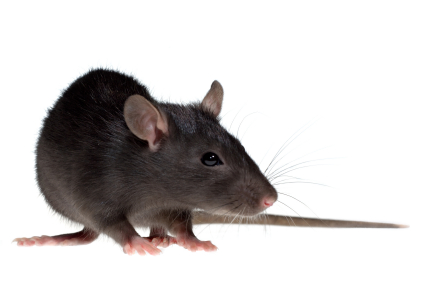The Health Risks Associated With Rats

The Centers for Disease Control specifically lists more than 10 diseases that are attributed to rodents and rats in particular. They range from the Plague, which is what wiped out much of Europe, to minor problems such as salmonella and the spread of the West Nile Virus. Let’s take a closer look at what risks you may be exposed to if you are crossing paths with rats in the home, office or your favorite restaurant.
Hantavirus Pulmonary Syndrome
This is a viral infection that is normally caused from the inhalation of dust particles that are tainted with rat urine. It attacks the respiratory system and produces early symptoms that include fatigue, fever, severe body and muscle aches, dizziness, chills, vomiting, diarrhea, coughing and tightness in the chest. Advanced symptoms include persistent coughing and shortness of breath. The disease is fatal in nearly 40% of cases.
Hemorragic Fever and Renal Syndrome
This is a variant of the Hantavirus, and can be spread from feces, urine, saliva or dust from rat nests or places where they are known to travel and congregate. Transmission is commonly caused through inhalation, however, infections can occur through broken skin or mucous membranes. In addition to the symptoms listed above, patients can also develop kidney failure, blood flowing from veins, pulmonary edema, shock, low blood pressure and fluid buildup. It has a mortality rate of around 15%.
Leptospirosis
This is a bacterial infection that is caused primarily from urine or water that has been contaminated with the urine of infected rats. It is primarily considered as a food-borne illness in the United States, however farm workers as well as those who handle products obtained from contaminated soil are also at risk. Symptoms include many listed above in addition to a high fever, jaundice and the formation of a persistent rash. The good news is that this is treatable with a course of antibiotics and most people make a full recovery. However, symptoms can persist for months without treatment.
Rat Bite Fever
This is another bacterial infection that can be transmitted from being bitten or scratched from infected rats. However, simply handling an infected rodent can be enough to pass on the bacteria to humans. Consuming food and beverages that are contaminated by rats is also a common pathway to exposure.
Symptoms begin to emerge within the first 10 days of exposure and include fever, chills, body aches, rashes and joint pain. As the infection spreads, joints can swell and become red and painful. Swollen lymph nodes and the formation of an ulcer at the wound site are also common. Left untreated, this infection can be fatal.
These are just a few of the most serious diseases that are either directly or indirectly transmitted by rats. However, they also transmit a wide range of allergens and irritants as well. Keep in mind that most municipal rat control measures may become non-existent in the event of a crisis, and rodents will be largely responsible for the spread of disease during a SHTF situation. Couple that with the fact that medical resources may be limited, and you can see why preventive steps and maintaining high sanitary standards is so important. This underscores the importance of keeping rats away from indoor living spaces and food supplies, and its essential that you take appropriate steps to protect your family and stockpile from infestations.
